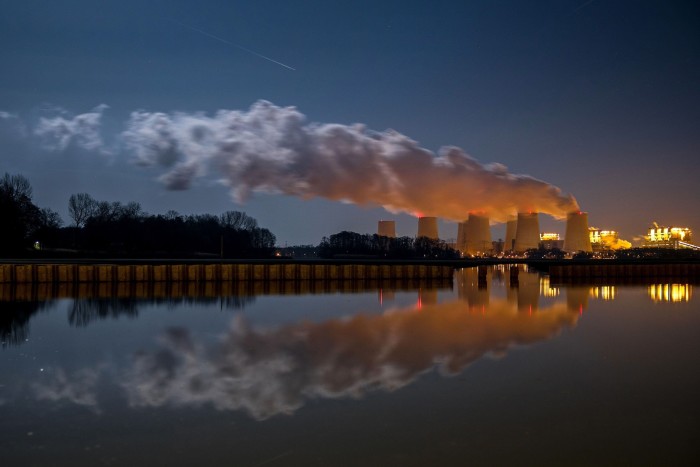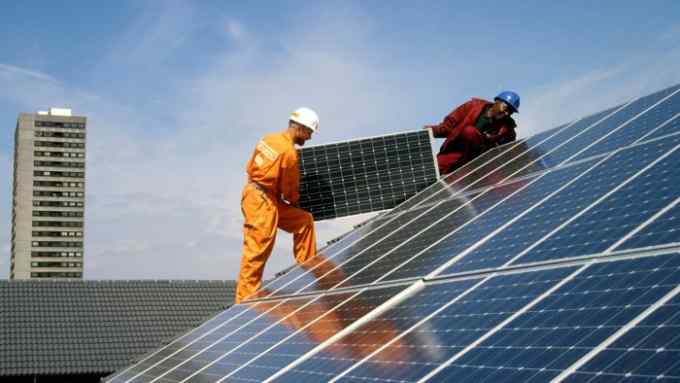Investors scrutinise ‘real’ assets on sustainability credentials

Simply sign up to the ESG investing myFT Digest -- delivered directly to your inbox.
As demand for sustainable investing has boomed, asset managers have come under pressure to focus on environmental, social and governance (ESG) issues when buying stocks and bonds. But attention is now turning to a less liquid, but highly influential, asset class: real assets.
Some so-called real, or physical, assets — which include property, infrastructure and farmland — are already playing a big role in addressing investors’ ESG concerns. Renewable energy, including wind, solar and battery projects, have already proved popular with investors seeking to counter climate change.
However, other real assets have come under less scrutiny on ESG grounds — from both asset managers and their clients — despite often having a substantial environmental or social impact. Buildings across the US, for example, account for 40 per cent of the country’s carbon emissions, according to the Environmental and Energy Study Institute. Real assets such as railways, electricity supply or airports also often have high emissions.
This lack of ESG scrutiny is finally changing, though, says Paul Jayasingha, global head of real assets manager research at Willis Towers Watson, a consultancy.
“Both fund managers and investors are starting to pay a lot more attention [to ESG in real assets]. There has been a marked positive shift in the last two to three years,” he says.
A survey by Macquarie Infrastructure and Real Assets last year found 91 per cent of global institutional investors, which collectively oversaw $20tn in assets under management, expected to increase ESG real-asset investments over the next five years. Just 58 per cent had increased their focus in the previous five years. A combination of strong performance, regulatory pressure and concerns about long-term issues such as climate change, have all been credited with driving investor interest.
Chris Leslie, global head of sustainability for the infrastructure and real assets division of Macquarie Asset Management, part of the Australian-headquartered Macquarie Group, says ESG was “approached from a risk perspective” in the past. Now, as well as looking at risks, investors are focusing on opportunities — particularly when it comes to the climate transition.
“The transformation of the energy sector or the industrial sector will require massive amounts of investment. The investors have shifted their focus from risk analysis to [thinking] ‘wow, this is potentially the largest investment opportunity of our lifetime. How do we participate in this very large shift in the global economy?’”
DWS, the German asset manager, predicts that sustainability will increasingly be at the centre of the investment agenda, as a result of the pandemic. It argues that Covid-19 will accelerate policymakers’ sustainable infrastructure targets in order to support the recovery and decarbonisation of global economies.
Hamish Mackenzie, head of infrastructure at DWS, says: “Investment in renewable energy is perhaps the most obvious manifestation of the sustainability agenda, but there is more and more focus on ESG — not just from a policy perspective, but as a value creation asset-management strategy.”
Another driver is that investors no longer believe that ESG and performance are in conflict with each other.
A poll by UK asset manager Aviva Investors of more than 1,000 pension and insurance investors last year found that eight in 10 believed the pursuit of ESG was not at the expense of financial returns. The research also found that more than half of investors are now on the hunt for investments that make a positive impact.
One of the attractions of real assets, compared with more liquid stocks or bonds, is that “you are often far closer to the investments”, because you are usually the owner or lender, explains Ed Dixon, head of real assets ESG at Aviva Investors.
Allison Spector, director of sustainability in the real assets and private markets team at Nuveen, the US asset manager, adds that sustainability has “always been an important concept in real assets”.
“But there is greater awareness of the risks and opportunities of issues,” she says.
Spector says Nuveen is receiving more questions from clients on ESG issues, including how it is using climate solutions in its farmland and timberland portfolios.
Jayasingha says the increased focus on ESG makes sense. “Real assets are long-term investments and typically are an ingrained part of society or a local community. They tend to create most value over time for investors when they create value for society. If they don’t, then typically, customers, politicians or regulators act in such a way to reduce your return.”
Climate Capital

Where climate change meets business, markets and politics. Explore the FT’s coverage here
Still, there are challenges when it comes to real assets and ESG. While a whole host of benchmarks and standards have sprung up to allow investors to compare ESG at different public companies and funds, this is often much harder to do with real assets.
“One of the biggest challenges is the commonality and comparability of data,” says Dixon. “The investable universe is so big and so broad, it is very hard to compare one infrastructure asset with another, one real estate portfolio with another.”
This is changing, thanks to new standards, such as GRESB, a global ESG benchmark for real assets. GRESB provides standardised sustainability data — on property companies, developers, infrastructure funds and assets — to institutional investors.
FT Live webinar
Navigate ESG value in the diverse world of real assets.
Register for your free ticket to join on Wednesday 24 March 09:00 - 09:50 GMT.
Nevertheless, that does not prevent some from worrying about a bubble developing in some ESG real assets. “There is a huge demand for these investments. As the demand goes up the price goes up,” says Leslie. “But there are still a lot of investments to be made.”
Spector plays down the risk of a bubble. “You have to know your manager, do your due diligence, look for performance-based metrics and decide for yourself,” she says.
Dixon says he expects demand for ESG in real assets to continue to grow. “By investing in real assets, you can support the economy, create jobs, invest directly in assets that are supporting the climate transition,” he says. “Investors are starting to realise the potential.”

Comments